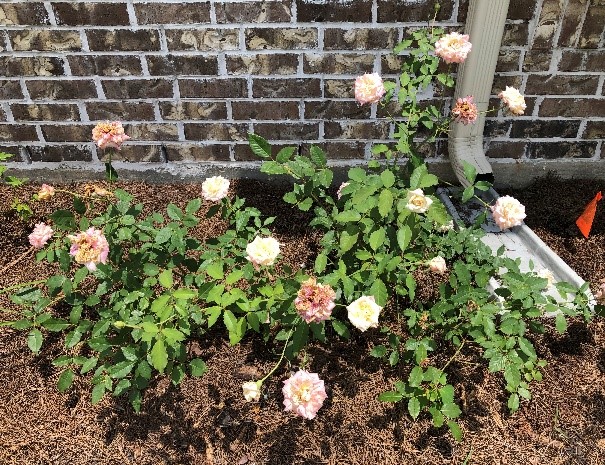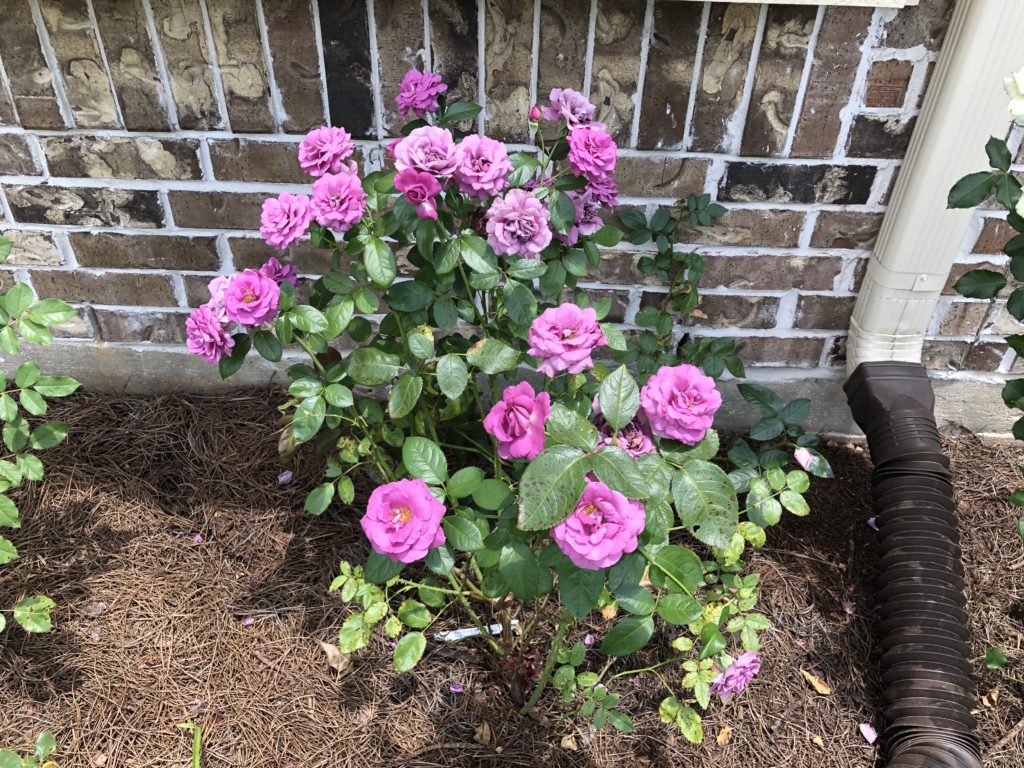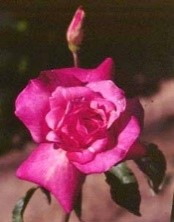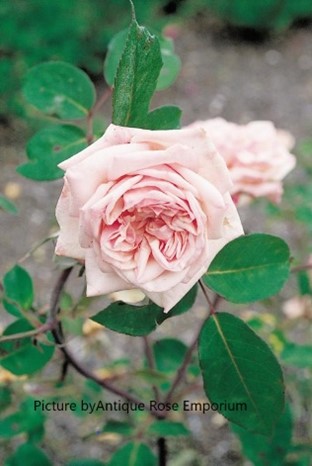Tea Roses
By Elisabeth Castro
While searching for the history of the Rose ‘Mrs. Dudley Cross’ I came across a book written at least one hundred years ago in which Georgia Torrey Drennan extols the virtues of the Tea Rose. Her book with the lengthy title “Everblooming Roses For The Outdoor Garden of the Amateur, The Culture, Description and Care of Roses” is probably as applicable today for growing roses in the South as it was in 1912 when her book was published.
The chapter ‘The Rose without a Thorn’ did not solve the mystery as to why some roses like Mrs. Dudley Cross do not have prickles. Although Rosa banksia was mentioned as the only rose literally “without a thorn,” Rosa rugosa was also mentioned as having fewer prickles than any other rose, except those of the Tea. A quick look in my garden found plenty of Teas with stiff prickles, albeit not closely spaced. Mrs. Dudley Cross is listed as a yellow hybrid tea rose by Georgia Torrey Drennan. It is classified as a Tea by The American Rose Society.
In “Tea Roses – Old Roses for Warm Gardens’ the authors who garden(ed) in Australia mention a Species ancestor of Tea Roses, as Rosa gigantea collected in 1888 in the hills north of Burma, now Myanmar. Rosa gigantea was described as having long thorn-less lateral shoots. According to the authors in south-western Australia the stems of Mrs. Dudley Cross are almost always smooth whereas in colder climates the branches may have prickles.
In my quest to find more roses without or with few prickles I kept searching for information on the parentage of Mrs. Dudley Cross which was bred by William Paul and Son in 1907. In “The Rose Rustlers” Greg Grant describes Mrs. Dudley Cross as the most common pass-along rose in San Antonio. The chapter “The search for the San Antonio Rose” has a funny story related to this rose. Read the book. I has great stories written by Greg Grant and Dr W. Welch.
I finally planted my Mrs. Dudley Cross late last fall after having her sit in a pot for almost two years. Here she is rewarding me with beautiful blooms this May for finally giving her a home.

She is next to some stiff competition. Plum Perfect is a Floribunda, which after an initial bout with black spot due to heavy rains, recovered and is blooming her heart out.

Tea roses are my favorite class of roses. They thrive in the heat and humidity of the South and aren’t nearly as twiggy as the Chinas, my second best class of roses. The Duchesse de Brabant, a Tea, is fairly twiggy if you let her. Same with Miss Caroline. She looks more like a China than Tea. Miss Caroline is said to be a sport of the Comtesse de Labarthe, the name used for the Duchesse de Brabant in Australia.
I like Teas mainly because of their blooms and disease resistance. The blooms have a tendency to nod or hang their heads but have at least 25 petals and a fragrance reminiscent to tea leaves. One of the explanations given as to why they were given the classification Tea.
Teas can get quite large, 5 to 6 feet and over time the canes can turn smooth like polished wood. That is certainly the case for Beauté Inconstante in my garden.

Beaute Inconstante
I did the same with a Pioneer rose, Mier y Teran, which in my opinion looks like a Tea. It is almost thornless, and the pointed buds open up to a pink blend rose with at least 40 petals.
 Another large Tea is Baronne Henrietta de Snoy. The initial canes are a red-bronze with reddish purple foliage that turns a shiny deep green.
Another large Tea is Baronne Henrietta de Snoy. The initial canes are a red-bronze with reddish purple foliage that turns a shiny deep green.
Not all Teas get as large. Duchesse de Brabant only reached about 4 ft in my garden. Rhodologue Jules Gravereaux has remained small at 3 ft and Rosette Delizy, recently planted, is too small to give me an indication of its height. Equally small in stature is Francis Dubreuil. Madame Antoine Rebe is still in her original pot, waiting to be planted, but promising to be large. Same as Papa Contier.
In truth, I like all classes of roses and I’ll try them all. Recently planted are; Lady of Shallot, Shrub by David Austin; Anne Harkness, Floribunda by Harkness; Bajazzo, Climber by Kordes; Abraham Darby, Shrub by David Austin; Summer Sun, Shrub by Kordes; Beverly, Hybrid Tea by Kordes; Coffee Country, Floribunda by Viraraghavan; Naga Belle, Shrub by Viraraghavan; Moroccan Rose, Portland, found rose; and soon to be planted Rose of Hope, Floribunda by Kordes.
Roses are just now starting to create flower buds after the heavy pruning in February. The Chinas are the first to bloom and the air is filled with perfume from Spice and Ducher.